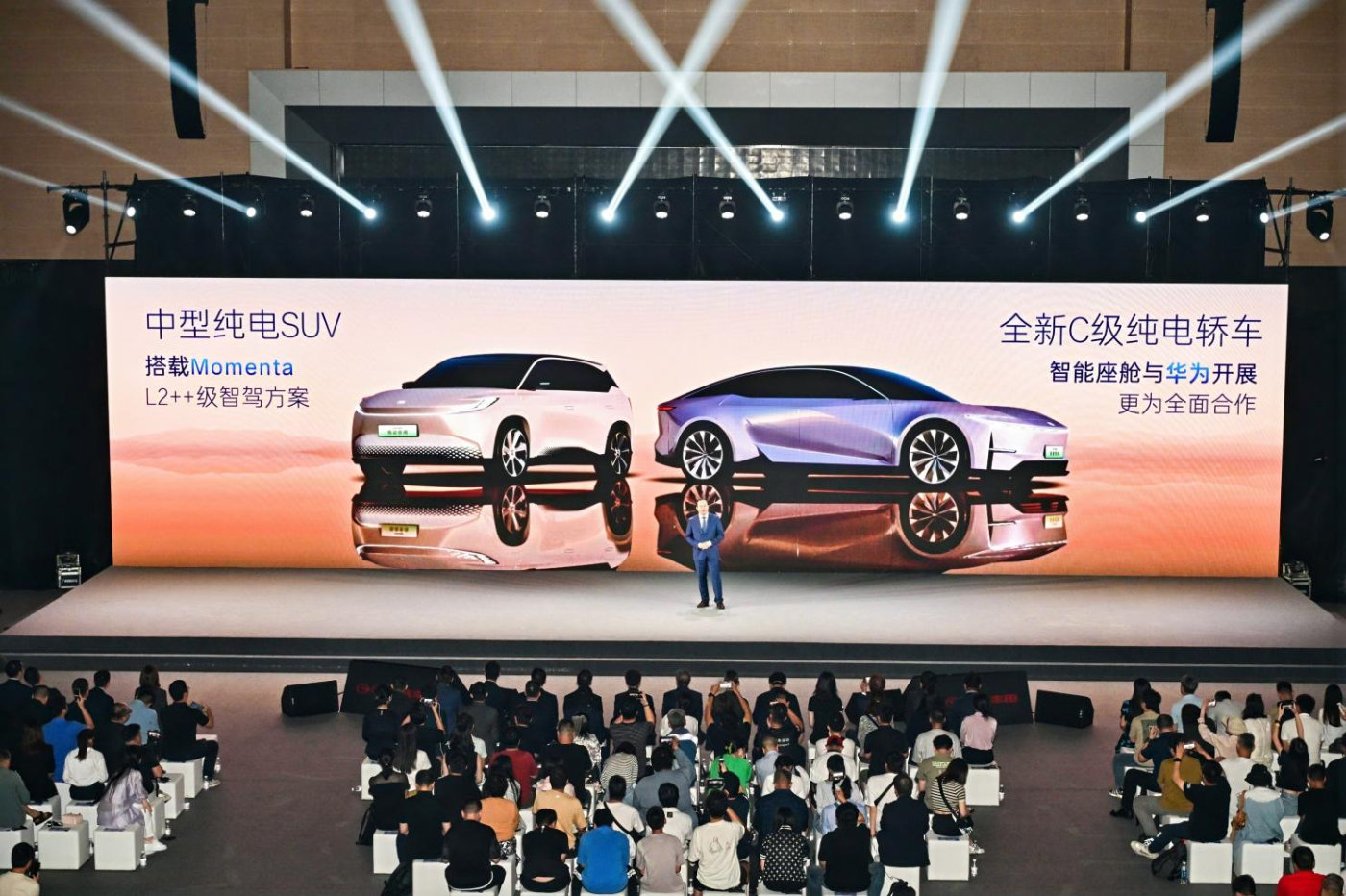Joint venture brands have also taken the technology route. On June 28, GAC Toyota, which has been established for 20 years, held its first Technology Day, showcasing its achievements in the field of intelligent electric technology for the first time – deep integration of oil-electric advantages, achieving ultimate balance with the fifth generation intelligent electric hybrid dual-engine technology; deepening localization research and development in intelligent cockpit and intelligent driving with top technology “circle of friends” such as Huawei, Tencent, Momenta, in order to create a “new joint venture car” that understands China better; as well as the accumulation of GAC Toyota in full-path electrification technologies such as hybrid, plug-in hybrid, pure electric, and hydrogen electric. In addition to the technologies that have already been put into production, GAC Toyota also “pre-released” a number of upcoming intelligent electric new technologies, among which the most anticipated include Hongmeng cockpit, new generation plug-in hybrid technology and new small-displacement engine, end-to-end advanced intelligent driving, solid-state batteries, and so on. “As the world’s first brand of intelligent electric hybrids, the biggest feature of GAC Toyota’s intelligent electric hybrid dual-engine is the balanced mechanism, with two power outputs seamlessly connected, no need to switch, just hybrid if you want, inherently intelligent, 26 million Toyota hybrid cars have 0 fires, 0 explosions, 0 leaks, taxis have driven 1.5 million kilometers with no faults in the hybrid system, which is a strong proof of safety and reliability,” said Peng Baolin, vice general manager of GAC Toyota. Compared to the newly started independent brands, Toyota’s hybrid system has already been validated in the global market, which is also the main reason why many relatively conservative consumers choose Toyota hybrid. Toyota is also continuously upgrading its hybrid technology, it is reported that currently Toyota’s hybrid technology has developed to the fifth generation, with lighter and smaller batteries, motors, and fuel tanks, but with a 12% acceleration improvement per hundred kilometers, a 10% reduction in fuel consumption, and further improvement in overall thermal efficiency. In addition to the popular hybrid technology, GAC Toyota also has layout in the pure electric and fuel cell fields. GAC Toyota is expected to achieve mass production of solid-state batteries in 2027, with a range of about 1200 kilometers in less than 10 minutes of charging. The performance lithium-ion battery, the popular phosphate iron lithium battery, and the high-performance lithium-ion battery will have ranges increased to over 800 kilometers, 600 kilometers, and 1000 kilometers respectively, expected to be put into use between 2026 and 2028.

Electrification is the first half, intelligence is the second half. GAC Toyota, together with Momenta, Tencent, Huawei and other Chinese suppliers, has achieved remarkable results in the field of intelligent driving and intelligent cockpit, attracting more attention. In the intelligent cockpit field, GAC Toyota will start using HarmonyOS cockpit, the most advanced cockpit system in the industry. HarmonyOS cockpit can achieve mutual sharing and connection between different devices, covering 37 in-car service scenarios and over 180 applications, including core functions such as visual, voice recognition, audio effects, touch, and head-up display. In the future, GAC Toyota, including imported Toyota models, are expected to be equipped with HarmonyOS cockpit to better meet the needs of Chinese users. In the field of intelligent driving, GAC Toyota’s Sena Robotaxi, developed in collaboration with Pony.ai, has been put into commercial operation, running accident-free for 1 year and accumulating over 32 million kilometers. It has obtained L4 level autonomous driving road test permits in multiple major cities in China. Furthermore, GAC Toyota will collaborate with Momenta to jointly develop advanced end-to-end intelligent driving, which will be first deployed in the Borui 3X model. At the algorithm level, Momenta’s data flywheel will be used to continuously improve system performance limits through massive production data feedback, autonomous learning, rapid iteration, and continuous OTA updates. This solution supports urban and highway intelligent driving, intelligent parking, and features an end-to-end intelligent driving large model based on Momenta algorithm 5.0, without relying on high-definition maps. In terms of hardware, models using this solution will be equipped with 126-line LiDAR and NVIDIA Orin X platform with 254TOPS of computing power. This solution claims to achieve “able to drive on roads, avoid obstacles, and park when there is space.” While leveraging its first-mover advantage in the hybrid field and expanding its presence in the new energy market, GAC Toyota is also leveraging the strength of Chinese suppliers to fill its gaps in the field of intelligence. GAC Toyota has set an example for the “new joint venture model,” and it is believed that before long, more joint venture brands will showcase their future development plans in various technological ways.
It depends on the determination of the joint venture brand. Although domestic brands such as BYD, Geely, and Chery have not been in the hybrid market for long, their update speed is faster and prices are lower. BYD’s latest fifth-generation DM-i system has achieved fuel consumption of 2 liters, surpassing Toyota. Therefore, joint venture brands need to compete closely with domestic brands with updated technology and lower prices in order to “stop the decline and rebound.” Whether they have the courage to do so remains to be seen. In addition, in the field of intelligent driving, joint venture brands generally fill their gaps by cooperating with Chinese companies, while new forces represented by Xiaopeng, NIO, and Li Auto mostly develop independently. Independent development is not only more controllable but also more convenient to strengthen intelligent driving capabilities through OTA updates. Simply put, independent development is stronger, while supplier solutions may be weaker. In the era of intelligence, joint venture brands struggle to compete for market share with technological advantages. It is almost impossible for joint venture brands to restore their former glory.